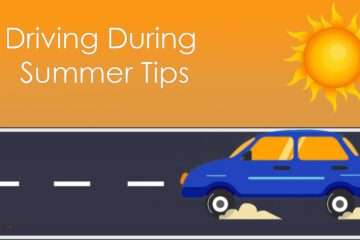Night Driving can be a challenging and daunting experience, especially when it comes to following other vehicles safely. The reduced visibility, glare from oncoming headlights, and potential hazards on the road can make it difficult to maintain a safe following distance and react quickly to any sudden changes. In this comprehensive guide, we will explore the essential tips and strategies to help you master night driving and ensure your safety when following vehicles in the dark.
The Challenges of Driving at Night
Navigating the roads at night presents a unique set of challenges that can impact your driving performance and safety. The lack of natural light, combined with the limited visibility provided by your own vehicle’s headlights, can make it harder to see the road ahead, identify potential obstacles, and gauge the distance between your vehicle and the one in front of you. Additionally, the glare from oncoming traffic’s headlights can temporarily blind you, making it even more challenging to maintain a safe following distance but you can reduce it by using night vision glasses for driving.
Understanding the Importance of Following Vehicles Safely
Maintaining a safe following distance is crucial while night driving, as it allows you to have enough time to react to any sudden changes or unexpected situations. Following too closely can increase the risk of a rear-end collision, as you may not have enough time to brake or maneuver your vehicle if the car in front of you suddenly slows down or stops. By keeping a safe following distance, you can improve your chances of avoiding accidents and ensuring the safety of yourself and other drivers on the road.
Tips for Maintaining a Safe Distance when Driving Behind Another Vehicle at Night
- Increase Your Following Distance: As a general rule, you should maintain a following distance of at least 3 to 4 seconds while night driving. This will give you more time to react and brake if necessary. To calculate the distance, choose a fixed object on the road (such as a sign or landmark) and count the number of seconds it takes for your vehicle to reach that same point after the car in front of you has passed it.
- Adjust Your Speed: Driving at a slower speed can help you maintain a safer following distance, as it allows you to have more control over your vehicle and react more quickly to any changes in the road or traffic conditions.
- Use Your High Beams Wisely: High beams can significantly improve your visibility at night, but they can also be blinding to other drivers. Use your high beams when there is no oncoming traffic, and be sure to switch to your low beams when approaching or following another vehicle to avoid dazzling the driver in front of you.
- Keep Your Headlights and Taillights Clean: Ensure that your headlights and taillights are clean and free of any dirt, debris, or obstructions that could reduce their effectiveness and impact your visibility or the visibility of the vehicle in front of you.
- Avoid Distracted Driving: Avoid using your phone, adjusting the radio, or engaging in any other activities that could divert your attention from the road and make it more difficult to maintain a safe following distance.
The Role of Night Driving Glasses in Enhancing Visibility For Night Vision Glasses For Driving

Night driving glasses, also known as anti-glare glasses or night vision glasses for driving, can be a valuable tool in enhancing your visibility and reducing the impact of glare from oncoming headlights. These specialized night driving glasses are designed to filter out the harmful blue light that can cause eye strain and reduce contrast, making it easier for you to see the road and the vehicles around you. By wearing night driving glasses, you can improve your ability to maintain a safe following distance and react more quickly to any changes in the driving environment.
You May Also Check
Top Solutions for Squeaky Brakes: Comfortably Stop the Noise Now
Squeaky brakes can transform a peaceful drive into a stress-inducing journey, not to mention the concern they bring regarding your […]
Night driving glasses (night vision glasses for driving) are yellow-tinted eyewear designed to enhance vision while driving in low-light conditions, such as at night or during dusk and dawn. These night driving glasses claim to reduce glare from headlights, streetlights, and other bright sources, making it easier for drivers to see the road by using night vision glasses for driving. Nevertheless, it’s crucial to bear in mind a few key considerations:
- Yellow Tint:
- Night driving glasses typically have a yellow or amber tint. This color is believed to improve contrast and reduce glare.
- The yellow tint filters out blue light, which can scatter and cause visual discomfort at night by using night vision glasses for driving.
- Claims and Reality:
- While manufacturers claim that these night driving glasses enhance night vision, research shows mixed results.
- Some studies suggest that yellow-tinted night driving glasses may not significantly improve night vision and can even worsen performance.
- The effectiveness of night driving glasses varies from person to person.
- Potential Downsides:
- Yellow-tinted lenses can alter color perception. Objects may appear differently than they do without the night vision glasses for driving.
- Some night vision glasses for driving wearers report that the yellow tint makes it harder to distinguish red and green traffic lights.
- Peripheral vision may be affected due to the color distortion.
- Anti-Reflective Coating:
- Some night driving glasses come with an anti-reflective coating. This coating reduces glare from headlights and other light sources.
- Anti-reflective coatings are also used in regular prescription night driving glasses to improve clarity.
- Consult with an Optometrist:
- Before using night driving glasses, consult with your optometrist.
- If you have impaired vision, cataracts, or astigmatism, your optometrist can guide you on whether these night driving glasses are suitable for you.
- Remember that night driving glasses are not a substitute for regular prescription eyewear.
- Alternatives:
- Instead of yellow-tinted night vision glasses for driving, consider anti-reflective coatings on your regular prescription night driving glasses.
- Keep your windshield clean and free from smudges, as dirt and streaks can worsen glare.
- Adjust your car’s side mirrors to minimize glare from vehicles behind you.
In summary, while night driving glasses may work for some individuals, they are not universally effective. If you decide to try them, choose a reputable brand and consult with your eye care professional to ensure they are safe and suitable for your specific needs. Always prioritize safety and focus on defensive driving techniques while night driving and use night vision glasses for driving.
Essential Precautions for Night Driving

In addition to maintaining a safe following distance, there are several other essential precautions you should take when driving at night:
- Ensure Your Vehicle is Properly Maintained: Regular maintenance, such as checking your tires, brakes, and lights, can help ensure your vehicle is in optimal condition and ready to handle the challenges of night driving.
- Keep Your Eyes Healthy: Get regular eye exams and consider wearing prescription night driving glasses (night vision glasses for driving) if you have vision issues that could impact your ability to see clearly in low-light conditions.
- Stay Alert and Focused: Avoid night driving when you are tired or impaired, as fatigue and impairment can significantly increase the risks associated with night driving.
- Be Aware of Your Surroundings: Continuously scan the road ahead and be on the lookout for potential hazards, such as pedestrians, animals, or debris that could suddenly appear in your path.
You May Also Check
Proper Tire Inflation: Ensuring a Smooth and Safe Ride
When it comes to maintaining our vehicles, one crucial aspect that is often overlooked is proper tire inflation. Contrary to […]
What are some other ways to reduce glare at night?
Reducing glare while night driving is crucial for safety. Here are some effective tips:
- Keep Your Windshield Clean:
- Dirt and streaks on your windshield can amplify glare. Regularly clean both the inside and outside of your windshield using windshield cleaner or a mixture of water, dishwashing detergent, and vinegar.
- If you’re about to drive at night, ensure your windshield is clean beforehand.
- Clean Your Mirrors and Windows:
- Dirty side mirrors and windows can also worsen glare. Use the same detergent-vinegar solution to clean them.
- Dry the surfaces with a clean microfiber cloth to avoid streaks.
- Clean Your Headlights:
- Dirty headlights can block light and reduce visibility. Use toothpaste to clean them: wet the headlights, apply toothpaste, scrub for a minute, and then rinse and dry with a microfiber cloth.
- Keep Your Glasses Clean:
- If you wear night vision glasses for driving, make sure they’re clean before driving. Use soap and water to remove dirt and debris from the lenses, and dry them with a soft microfiber cloth.
- Consider Anti-Reflective Coating:
- Ask your optometrist about anti-reflective (AR) coating for your night vision glasses for driving. AR coating is an ultra-thin film that reduces glare and improves vision.
- Dim Interior Lights:
- Keep dashboard lights dim to avoid eye strain while driving at night.
Remember, maintaining clear vision and minimizing glare are essential for safe night driving. Follow these tips to enhance your night driving experience after dark!
How can I adjust my car’s side mirrors to minimize glare?

Properly adjusting your car’s side mirrors can significantly reduce glare and improve visibility. Here’s how you can do it:
- Sit in the Driver’s Seat:
- First, make sure you’re comfortably seated in the driver’s seat.
- Adjust your seat height and depth so that you can see over the front of the car and comfortably reach the gear stick and steering wheel.
- Electronic Mirrors (Modern Cars):
- If your car has electronically adjusted mirrors:
- Locate the mirror adjustment controls, usually located to the right of the steering wheel.
- Use the buttons with arrows to adjust the mirror angles. There’s also a left/right control switch to choose which mirror to move.
- Ensure you can see the edge of the back of your car in the mirrors without seeing too much of the car itself.
- If your car has electronically adjusted mirrors:
- Manual Mirrors (Older Cars):
- For manual mirrors:
- Use your hand to adjust the mirrors.
- Push the mirror into the desired position.
- For manual mirrors:
- Adjust the Left-Right Plane:
- Ideally, you should only see a sliver of your car’s side in the side mirrors.
- If you can see a lot of your car, the mirror is too far in; if you can’t see any part of your car, the mirror is too far out.
- Night-View Setting:
- At night, glare from headlights can be an issue.
- Most cars have a night-view setting for the rearview mirror. Look for the button attached to the mirror (usually underneath or on the side) and turn it on to reduce glare from cars behind you.
Remember to adjust both side mirrors to cover your blind spots effectively while minimizing glare. Safe driving!
You May Also Check
10 Tips for safe driving during the summer
Summer is a wonderful season for road trips, weekend getaways, and outdoor adventures. The combination of scorching temperatures and heightened […]
How to Handle Unexpected Situations when Driving at Night
Even with the best precautions and planning, unexpected situations can arise while night driving. It’s important to be prepared to respond quickly and effectively to these situations to ensure your safety and the safety of others on the road. Some common unexpected situations you may encounter include:
- Sudden Braking or Swerving by the Vehicle Ahead: If the car in front of you suddenly brakes or swerves, maintain a safe following distance and be ready to react accordingly. Avoid slamming on your brakes, as this could cause you to lose control of your vehicle or be rear-ended by the car behind you.
- Encountering Pedestrians or Wildlife: Be on the lookout for pedestrians, animals, or other unexpected obstacles that may suddenly appear in your path. Reduce your speed and be ready to come to a halt if needed.
- Encountering Inclement Weather: Heavy rain, fog, or other adverse weather conditions can further reduce visibility and make it more challenging to maintain a safe following distance. Modify your speed and maintain an appropriate following distance accordingly and at night use night vision glasses for driving.
The Benefits of Planning Trips After Dark

While night driving can present unique challenges, there are also some benefits to planning your trips after dark. For example, roads are often less congested at night, which can make it easier to maintain a safe following distance and navigate through traffic. Additionally, the cooler temperatures and reduced glare from the sun can make for a more comfortable driving experience.
Tips for Driving in Different Weather Conditions at Night
Driving at night can be even more challenging when faced with adverse weather conditions. Here are some tips for navigating different weather conditions safely:
- Rain: Slow down, increase your following distance, and be extra cautious of hydroplaning. Use your low-beam headlights to improve visibility and avoid blinding other drivers.
- Fog: Reduce your speed, use your low-beam headlights, and be prepared to stop if visibility becomes severely limited. Avoid using your high beams, as they can reflect off the fog and reduce your visibility even further.
- Snow or Ice: Slow down, increase your following distance, and be aware of potential black ice or slippery conditions. Use gentle acceleration and braking to maintain control of your vehicle.
Blind-spot monitoring systems
Blind-spot monitoring systems are advanced driver assistance systems (ADAS) designed to enhance safety by reducing the risk of accidents during lane changes. These systems specifically address the dangerous blind spot area, which is the region around your vehicle that is not visible through the side mirrors or rearview mirror. Here’s what you need to know about blind-spot monitoring:
- How It Works:
- Blind-spot monitoring (BSM) uses sensors (such as radar or cameras) to detect vehicles or objects in your blind spots.
- When another vehicle enters your blind spot, the system alerts you through visual or audible cues, helping you avoid collisions during lane changes.
- Early Detection:
- BSM provides early detection of fast-approaching vehicles in the blind spot.
- Corner radar sensors or other technologies monitor adjacent lanes and trigger warnings when a vehicle is detected.
- Benefits:
- Improved safety: BSM helps prevent accidents caused by sudden lane changes.
- Increased awareness: Drivers receive real-time information about nearby vehicles, even if they are not directly visible.
- Limitations:
- False signals: Some BSM systems may occasionally give false alerts due to stationary objects (like signposts) or road conditions.
- Speed-based: BSM effectiveness can vary based on the speed difference between your vehicle and others.
In summary, blind-spot monitoring systems enhance driving safety by providing crucial information about vehicles in your blind spots. As technology advances, these systems play a crucial role in accident prevention and enhancing overall road safety.
Lane-keeping assist systems
Lane-keeping assist systems (LKAS) are advanced driver assistance systems (ADAS) designed to enhance safety by helping drivers stay within their lane. These systems primarily operate on motorways and dual carriageways, where unintentional lane departures can occur. Here’s how they work:
- Detection and Warning:
- LKAS uses cameras or other sensors to monitor the position of your vehicle within its lane.
- When your car begins to drift out of the marked lane, the system initiates an audible, visual, or haptic lane departure warning (LDW).
- The warning alerts you to the potential lane departure, giving you a chance to correct your position manually.
- Automatic Correction:
- If you fail to correct your vehicle’s position promptly, LKAS gently intervenes.
- It automatically adjusts the steering to guide you back into the proper lane.
- The goal is to prevent unintended lane changes and reduce the risk of accidents.
- Lane Centering:
- Some systems go beyond warning and correction. They actively center your vehicle within the lane.
- This functionality, sometimes referred to as “lane centering,” helps maintain a consistent position on the road.
- Benefits:
- Safety: LKAS enhances safety by preventing lane drift caused by fatigue, distraction, or momentary lapses in attention.
- Reduced Accidents: By keeping you within your lane, LKAS can significantly reduce the number of accidents.
Remember that LKAS is part of a broader suite of ADAS features aimed at making driving safer and more convenient. Always stay attentive and use these systems as aids rather than substitutes for responsible night driving.
You May Also Check
Starfire Solarus AS All-Season Tires Clear Reviews
The Starfire Solarus AS All-Season Tires have garnered widespread acclaim from users who are not only impressed by their exceptional […]
Conclusion: The Importance of Practicing Safe Night Driving Habits
Driving at night can be a daunting experience, but by following the essential tips and strategies outlined in this guide, you can master the art of safely following vehicles in the dark. Remember to always maintain a safe following distance, use your headlights and night driving glasses wisely, and stay alert and focused on the road ahead. By prioritizing safety and practicing good night driving habits using night vision glasses for driving, you can enjoy the benefits of night driving while minimizing the risks.
To further enhance your night driving skills and ensure your safety on the road, consider enrolling in a night driving course or accessing additional resources. Visit our website to explore our comprehensive selection of night driving tips and educational materials tailored to your needs. Take the first step towards becoming a confident and responsible night driver today.




